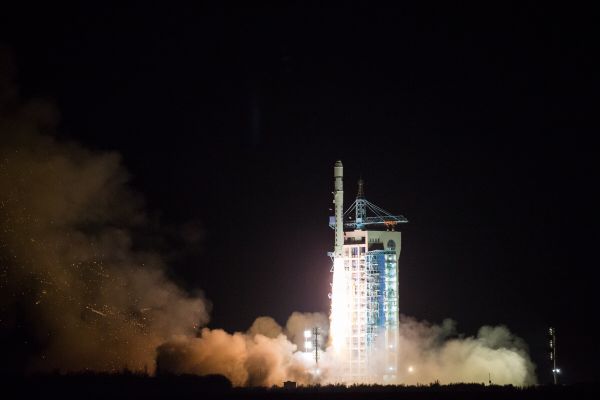Environmental and climate change require interdisciplinary solutions

On December 22, at the Jiuquan Satellite Launch Center in Gansu Province, China successfully launched an experimental satellite which will record global carbon dioxide levels.
On December 22, at the Jiuquan Satellite Launch Center in Gansu Province, China successfully launched an experimental satellite which will record global carbon dioxide levels. Experts said the satellite will enable China to form a preliminary ability to monitor regional and even global concentrations of atmospheric carbon dioxide. Environmental and climate change issues have always been tough challenges that are highly complicated in their formation and development both temporally and spatially. Therefore, it is necessary to promote interdisciplinary coordination, and carry out related systematic theoretical research.
Pessimistic trend
From the Kyoto Protocol to the Bali Roadmap, from the Copenhagen Climate Change Conference to the United Nations Climate Change Summit in New York and the Paris Agreement, environmental and climate change issues have been gaining prominence in recent years, and countries worldwide have invested a lot of manpower and material resources to seek improvements and solutions. Considering the problem has been caused by long-term accumulation of pollutants and the climate is still changing, the effectiveness of human efforts does not seem significant.
“In terms of both space and time, it is hard to say that human society lives in a safer, more comfortable and sustainable environment than it was in the early 1970s. Environmental problems are becoming increasingly apparent as a transnational problem, “said Huan Qingzhi, a professor of Marxism at Peking University.
“At present, air pollution caused by particulate matter shows typical characteristics of complex environmental problems,” said Wang Mingyuan, a law professor from Tsinghua University. Complex atmospheric pollution including smog and haze is caused by complicated, widespread reasons, but multiple pollution sources have made it difficult to determine which main body should take responsibility, Wang added.
Human activity
“Traditional industrial air pollution is singularly caused by large-scale industrial production activities, while present air pollution is a compound result of industrialization and urbanization. The causes ranged from industrial production and consumer activities to urban layout and planning, energy, construction, and transportation,” Wang said.
Wu Dui, a professor from the Institute of Mass Spectrometry and Atmospheric Environment at Jinan University, said that the emission of air pollutants is internal while meteorological conditions are external reasons for the formation of haze and smog. Atmospheric, aerosol forming smog comes from natural emissions and human activities. In a certain period of time, the total amount of aerosol particles emitted by both natural and human activities is generally stable, and meteorological conditions are the controlling factors for “haze weather” or “blue sky and white clouds.”
Qu Jiansheng, a research fellow from the Lanzhou Literature and Information Center at the Chinese Academy of Sciences, said as an objective process, climate change can be caused by natural factors and human activities. Climate change caused by the former is often slow and cyclical while that which is caused by the latter is often sharp.
Due to the high complexity of climate change in time and space and the complicated system comprised of society, energy, economy and the environment, solutions to this problem requires joint efforts involving scientific research, government policy and social actions.
Evolution
For scientific research, cooperation must first be seen in natural science and social science. Ai Likun, a research fellow at the Institute of the Tibetan Plateau at the Chinese Academy of Sciences, said the complexity of the earth system, scale differences of time and space, uncertainty and the multidisciplinary nature of scientific research, and human ethical values necessitate coordination between social and natural sciences for global environment research.
“There is a need for scholars in natural and social sciences to understand each other’s language and outcomes, and to inform policy-makers and the public about the language and knowledge of science,” An suggested. Therefore, a collaborative platform for natural and social sciences should be established to carry out case studies on sensitive topics while training interdisciplinary personnel.
For pure natural science, there is a certain degree of uncertainty or controversy in most of ecological and environmental problems. Humanities and social science thinking can be based on a more broad scientific background, Huan said. The current international context for academic and information exchanges has provided advantages for scientific research and disciplinary development.
Wang Guanglu is a reporter at the Chinese Social Sciences Today.
